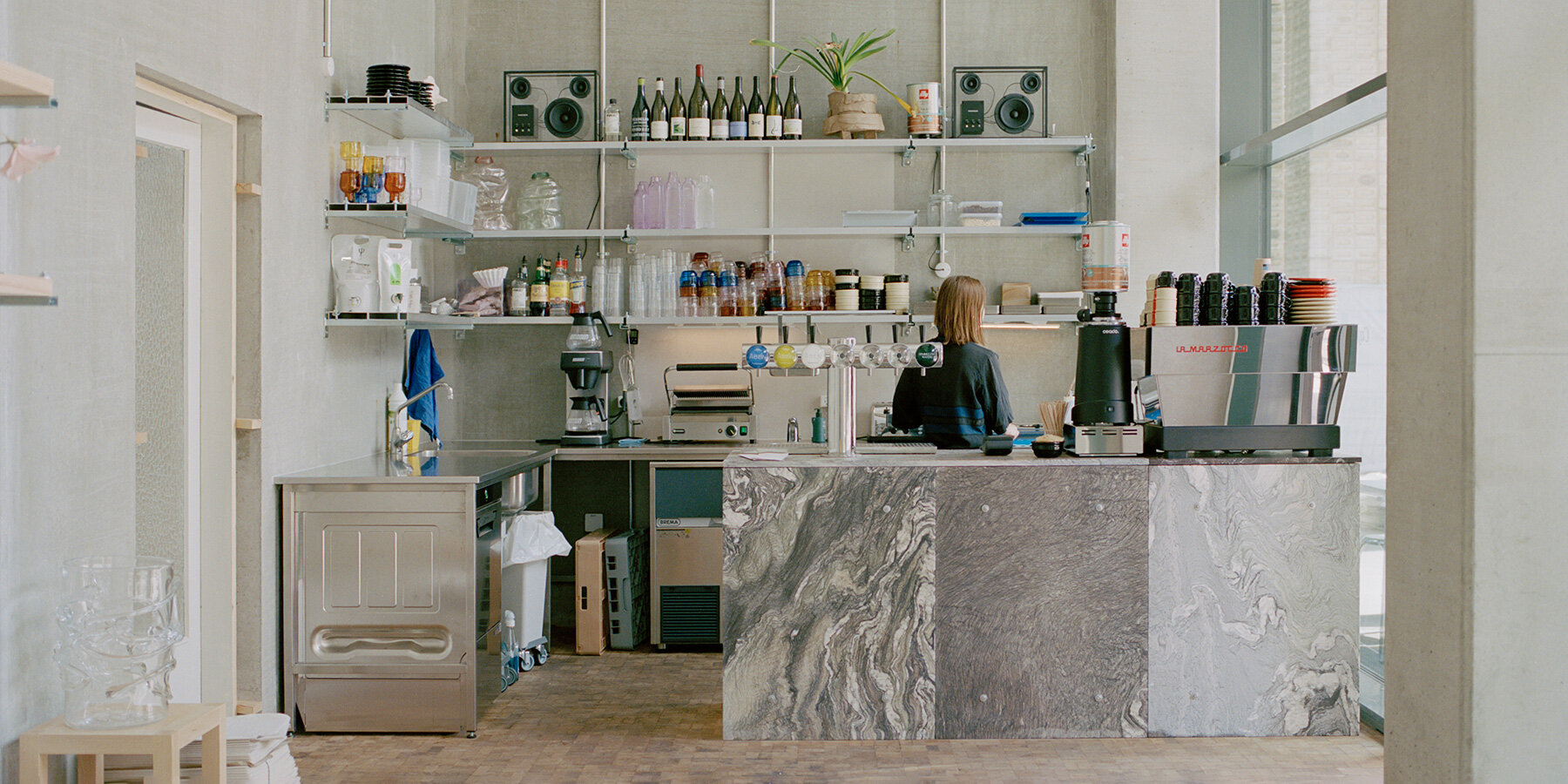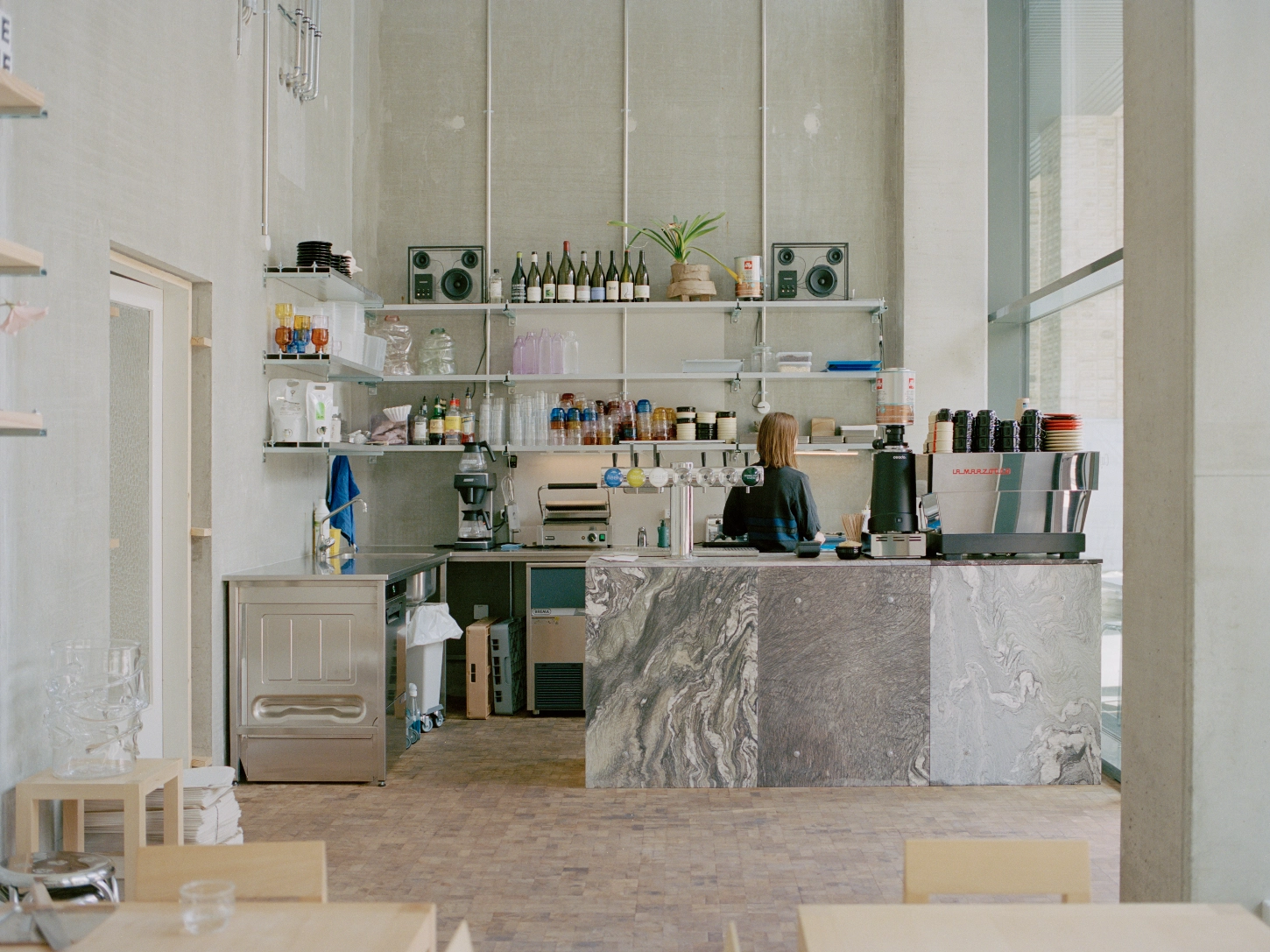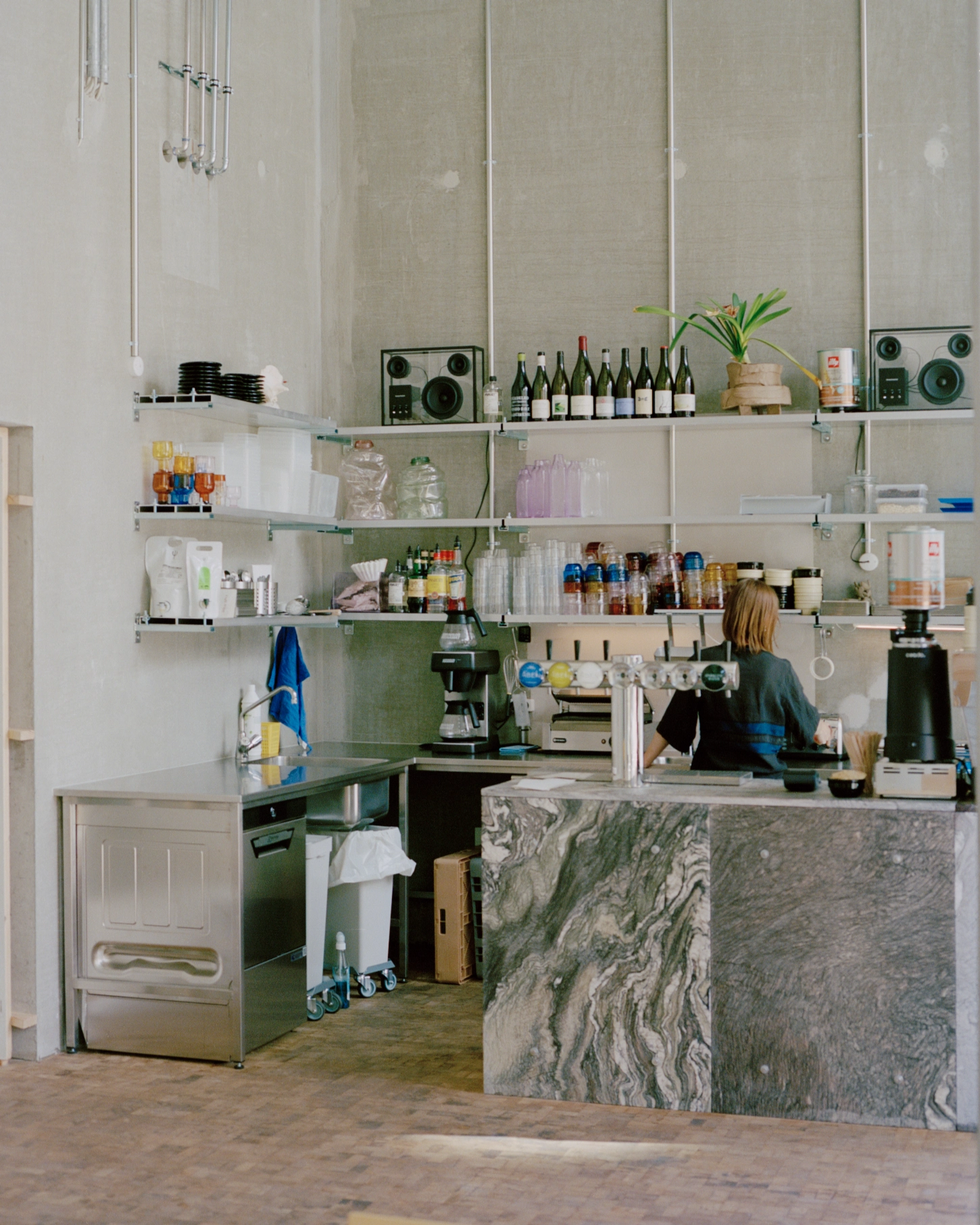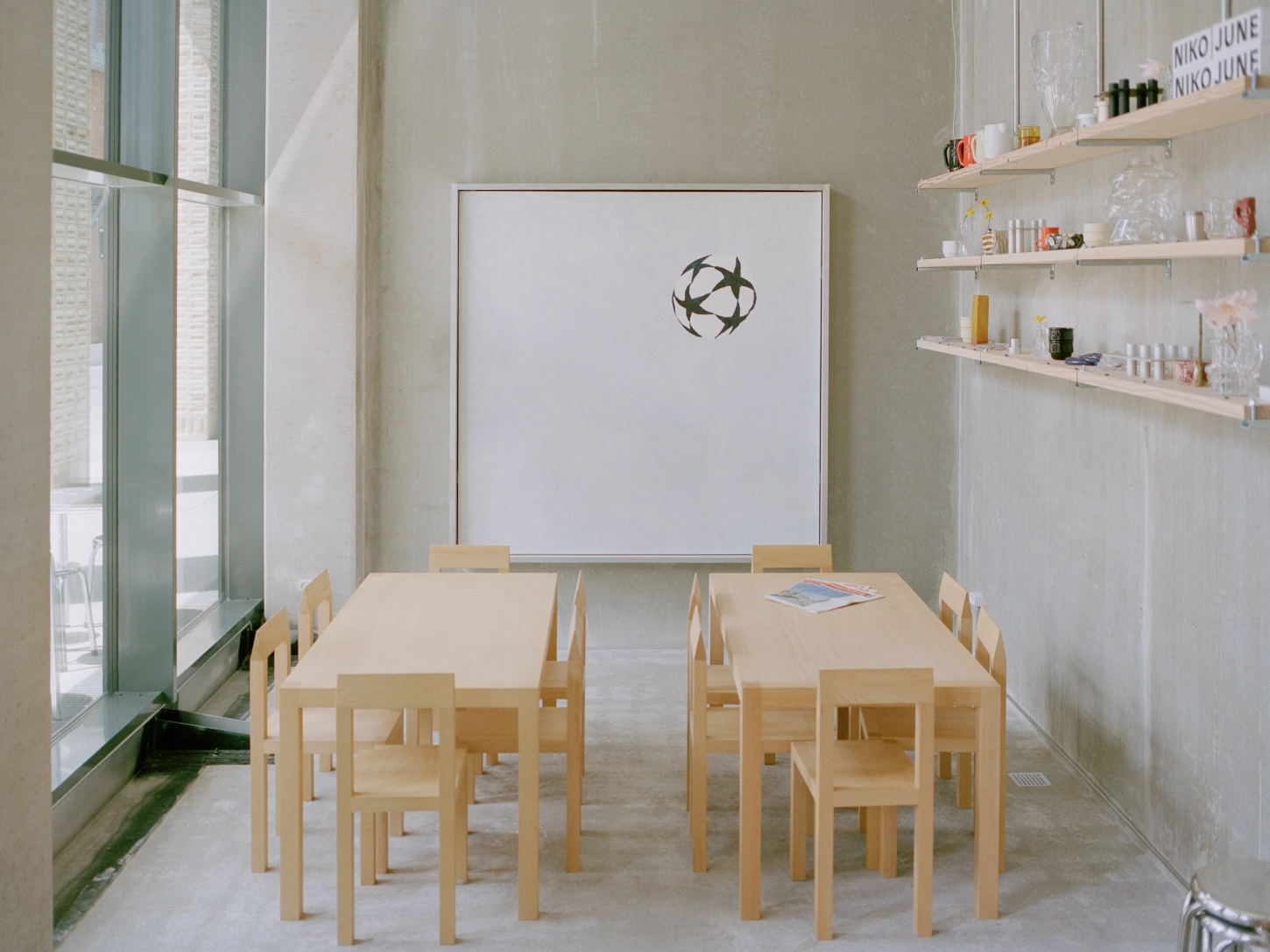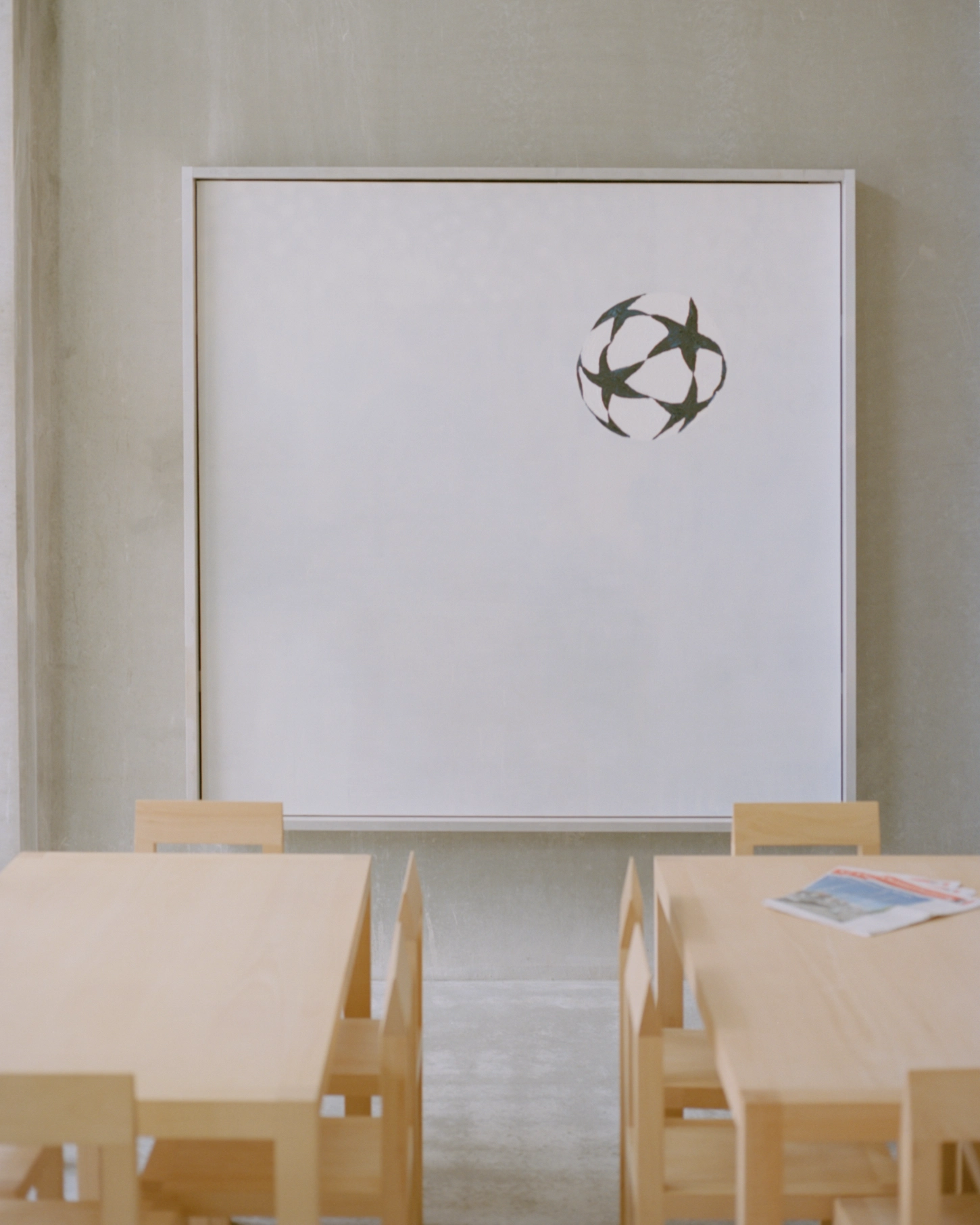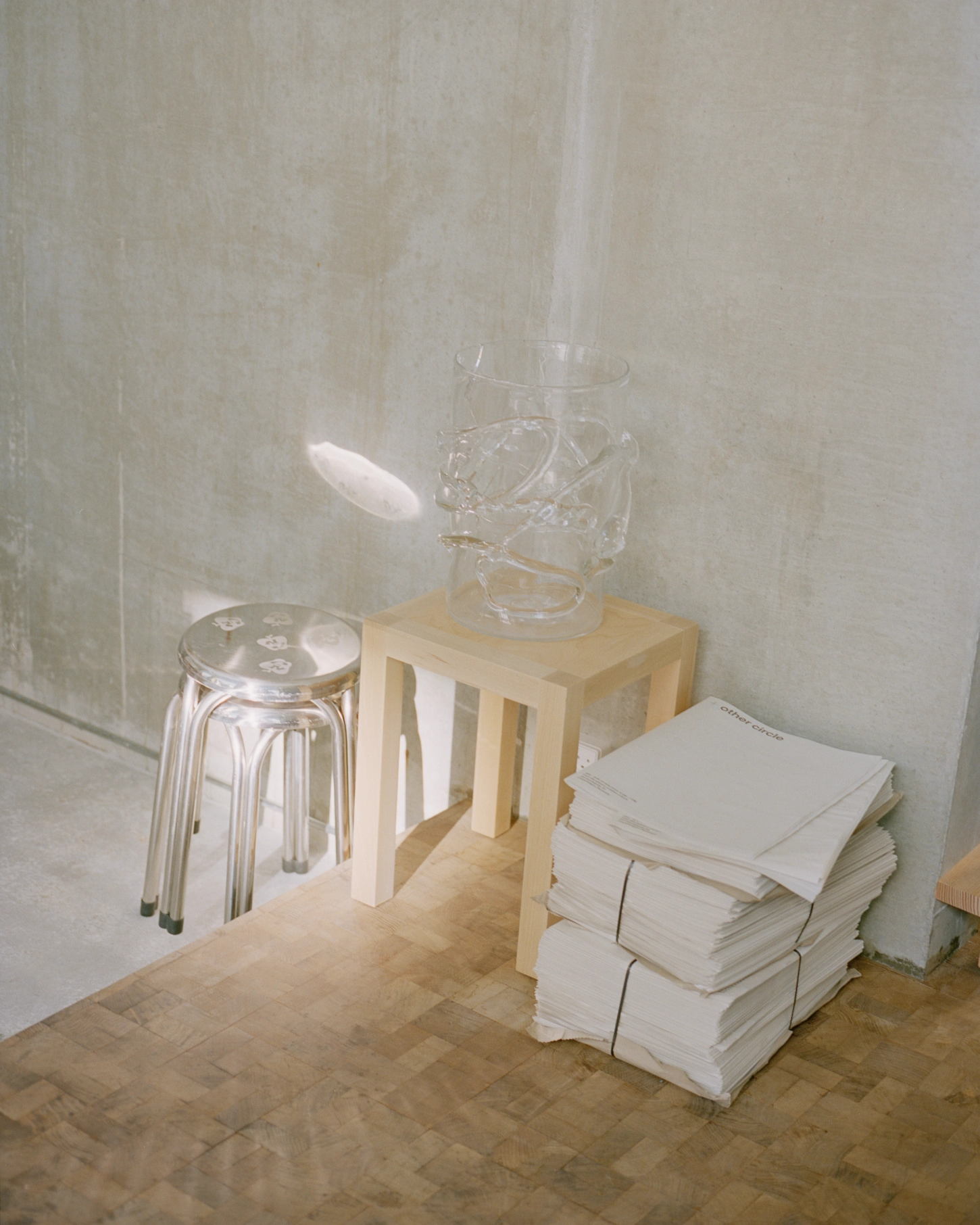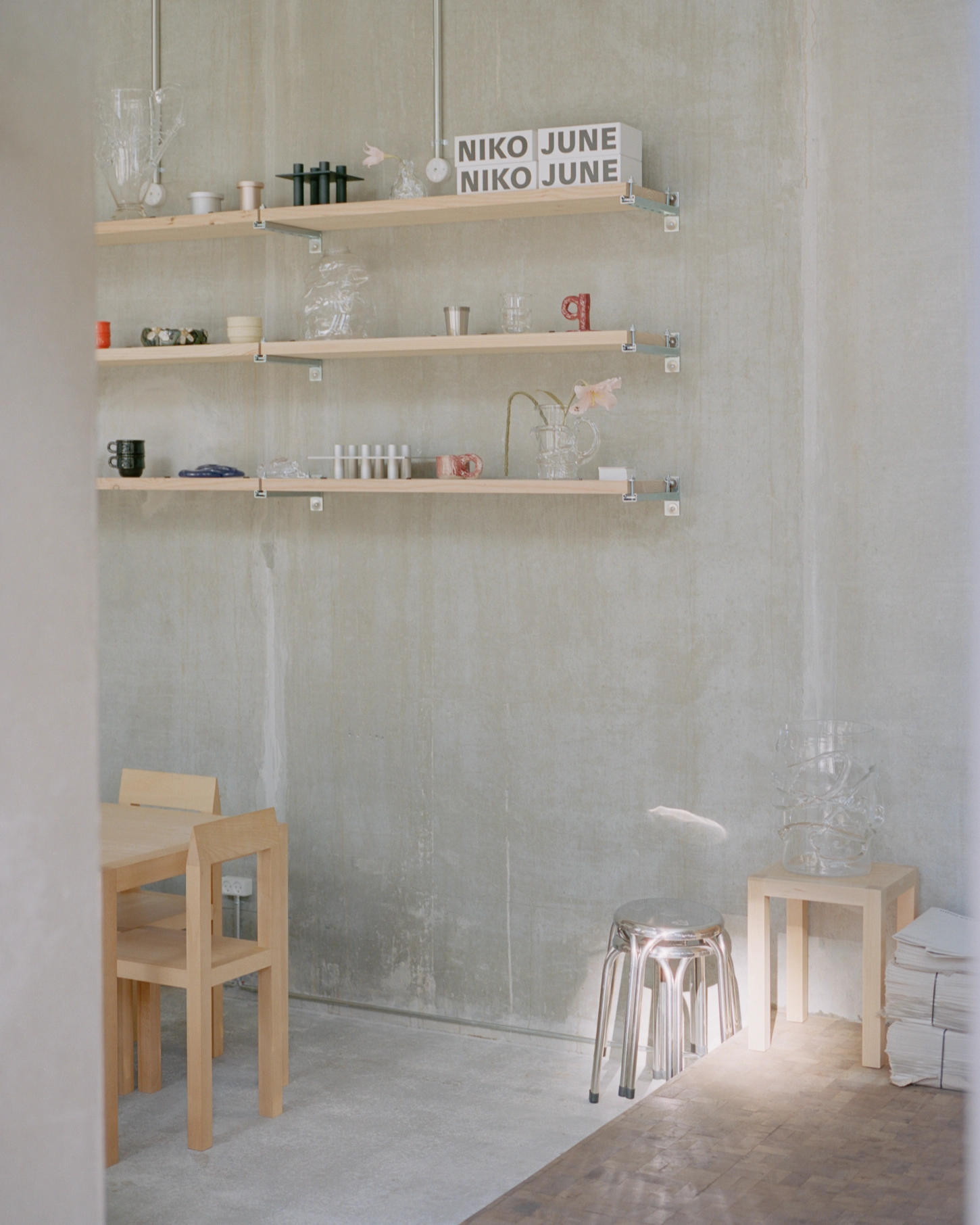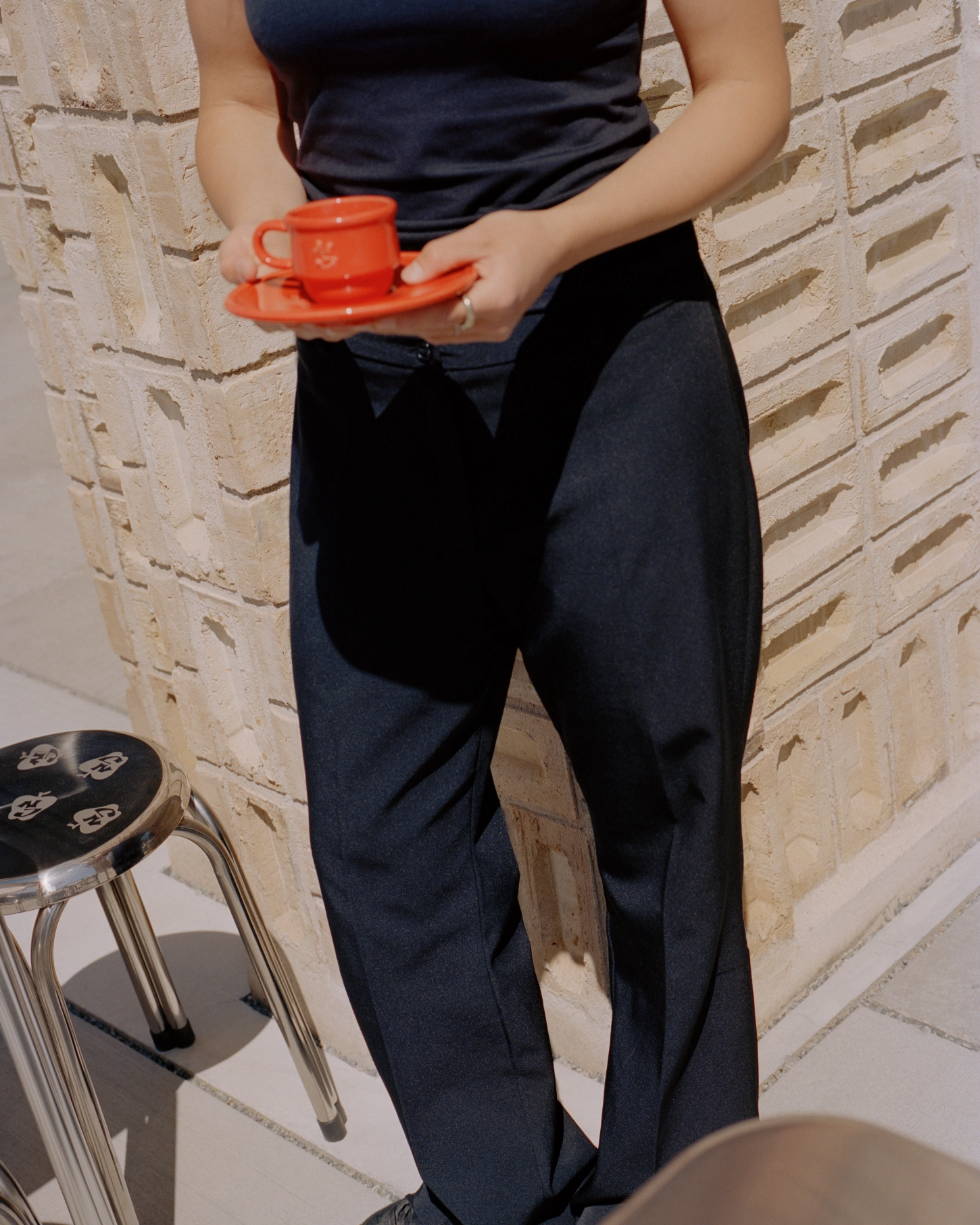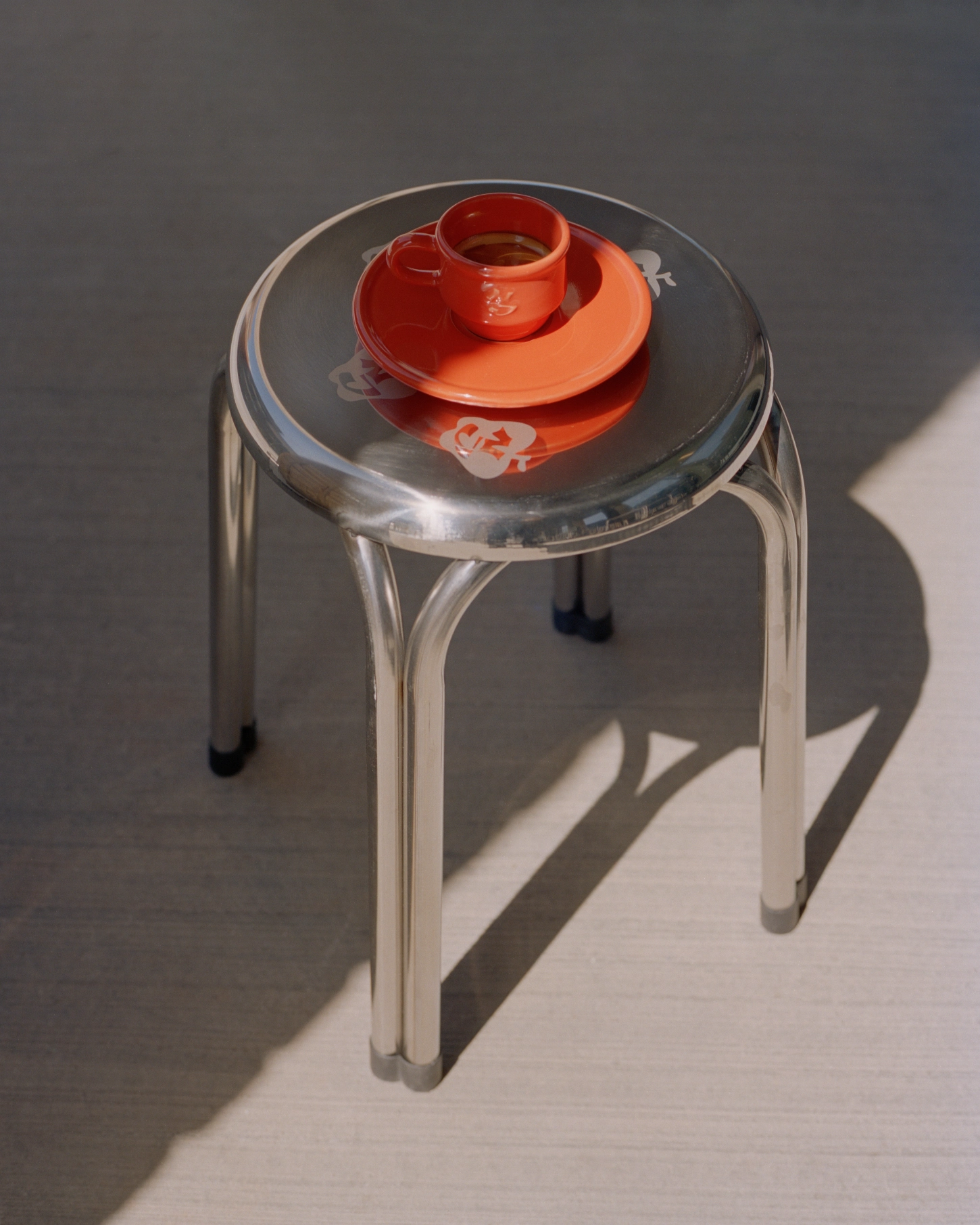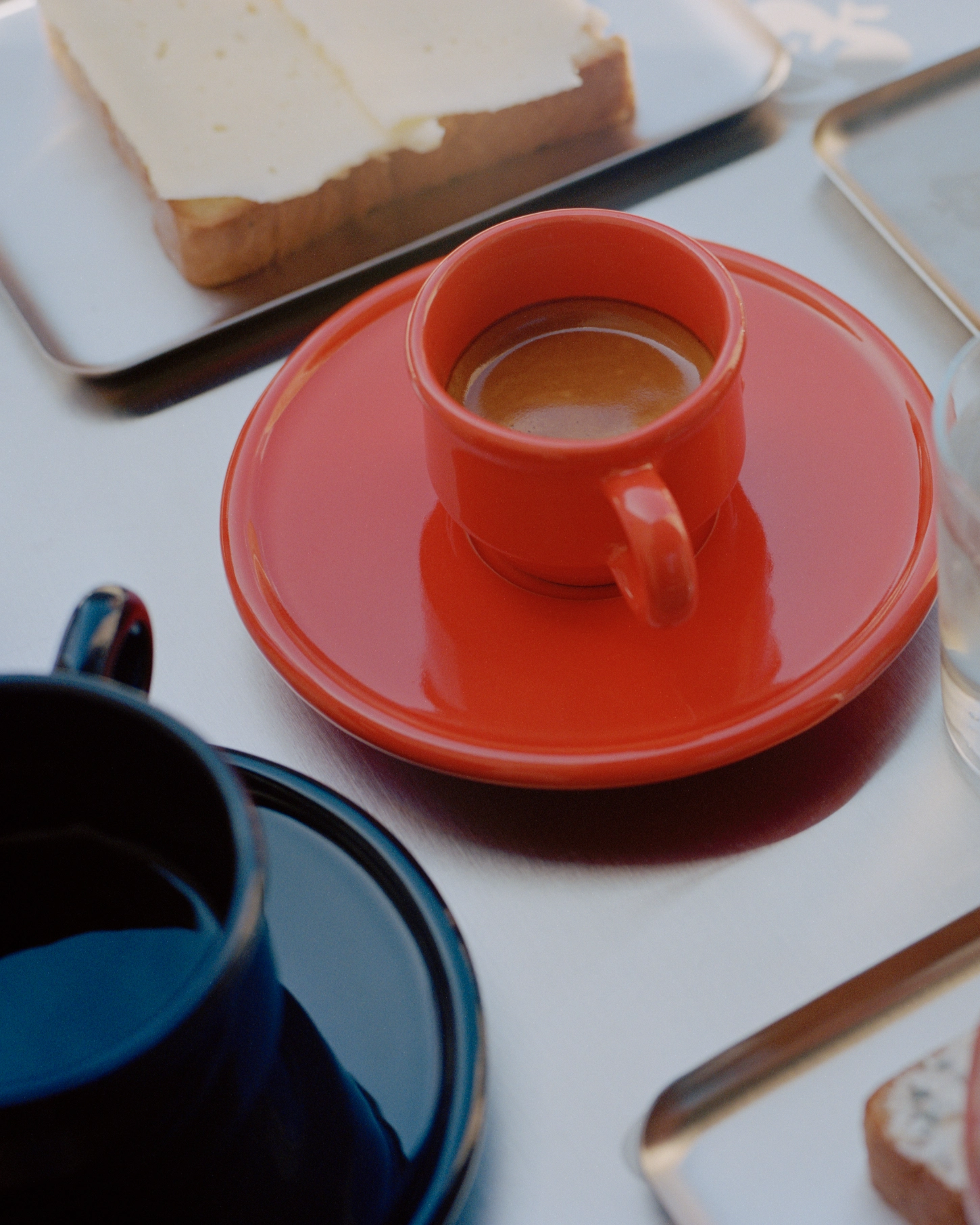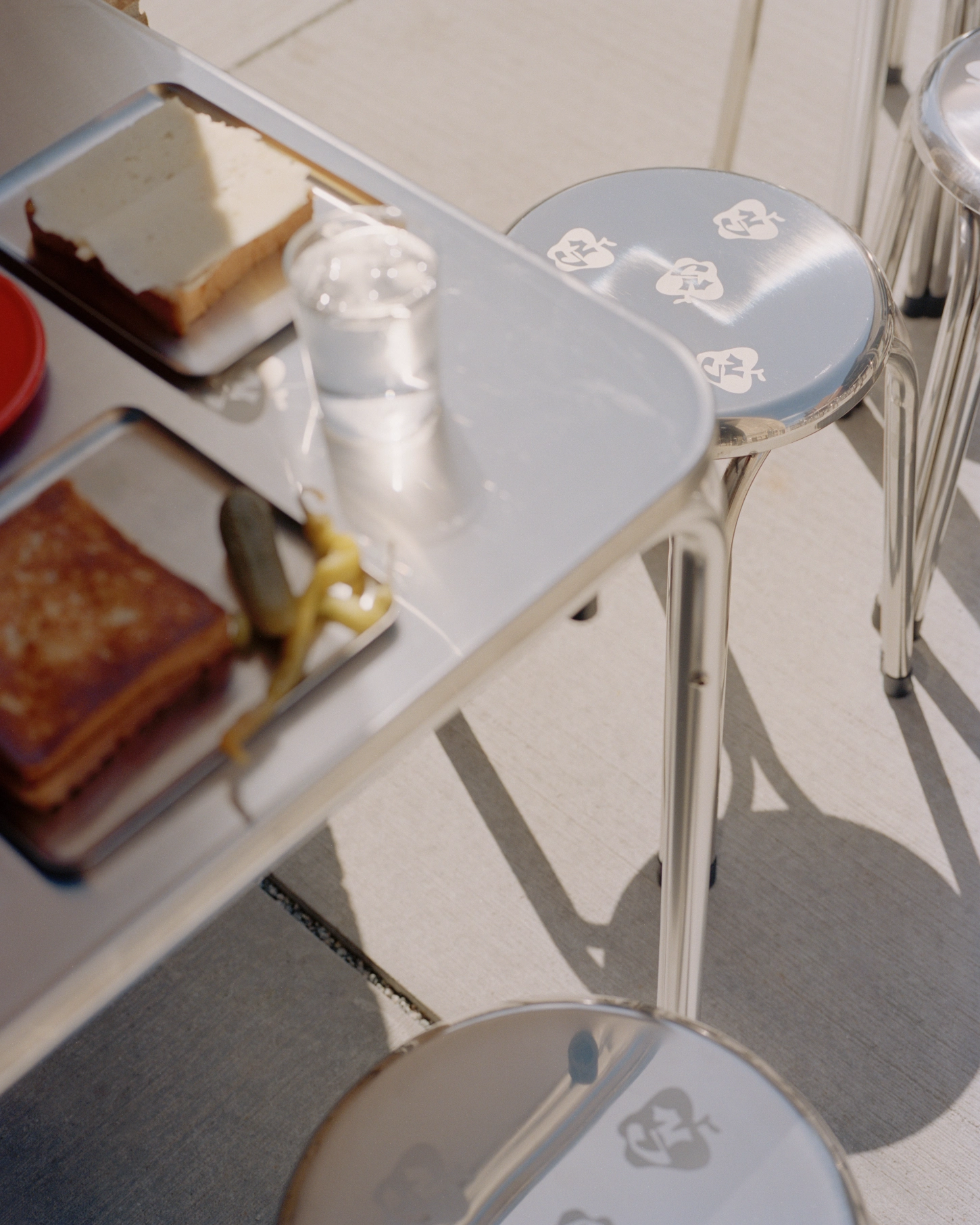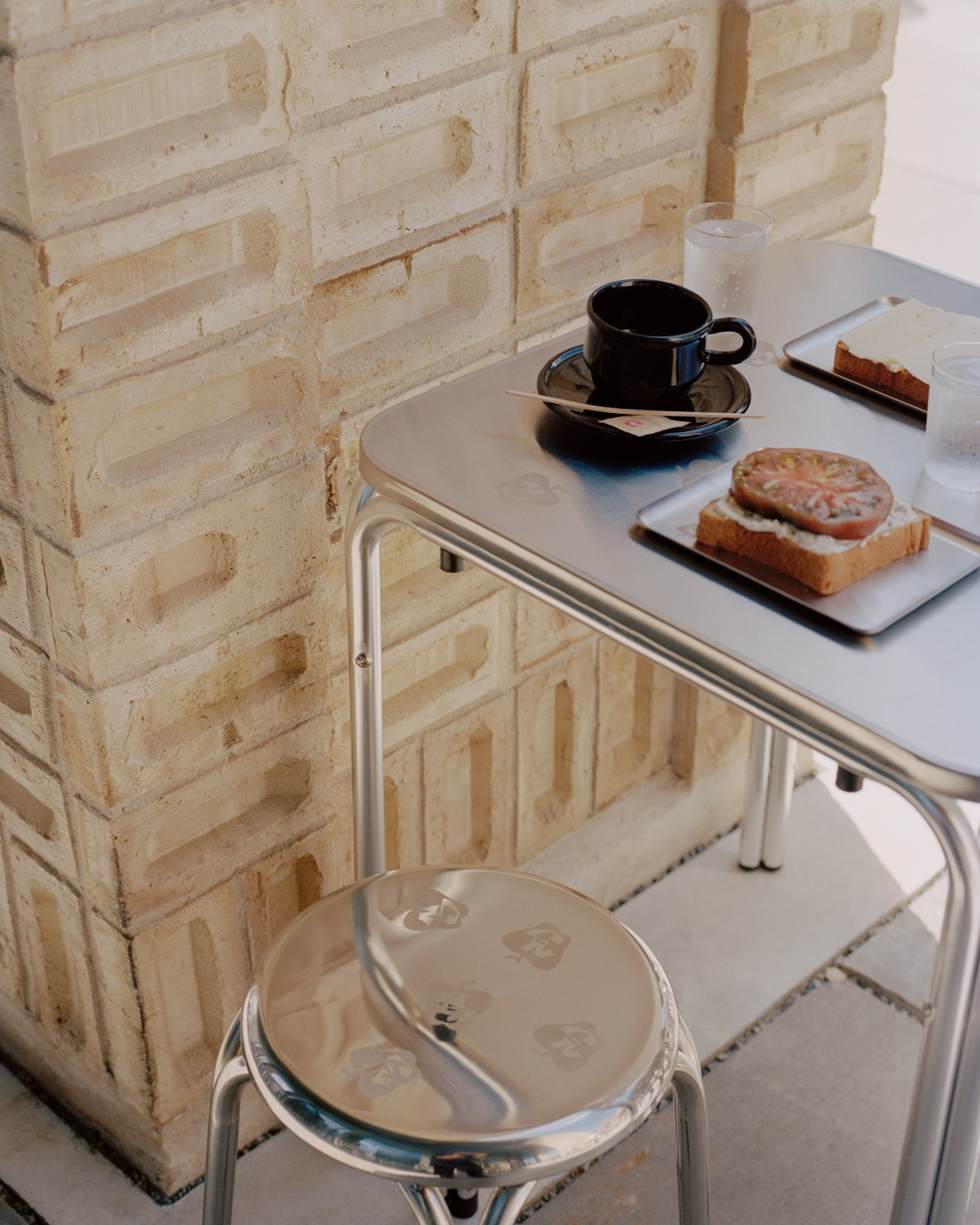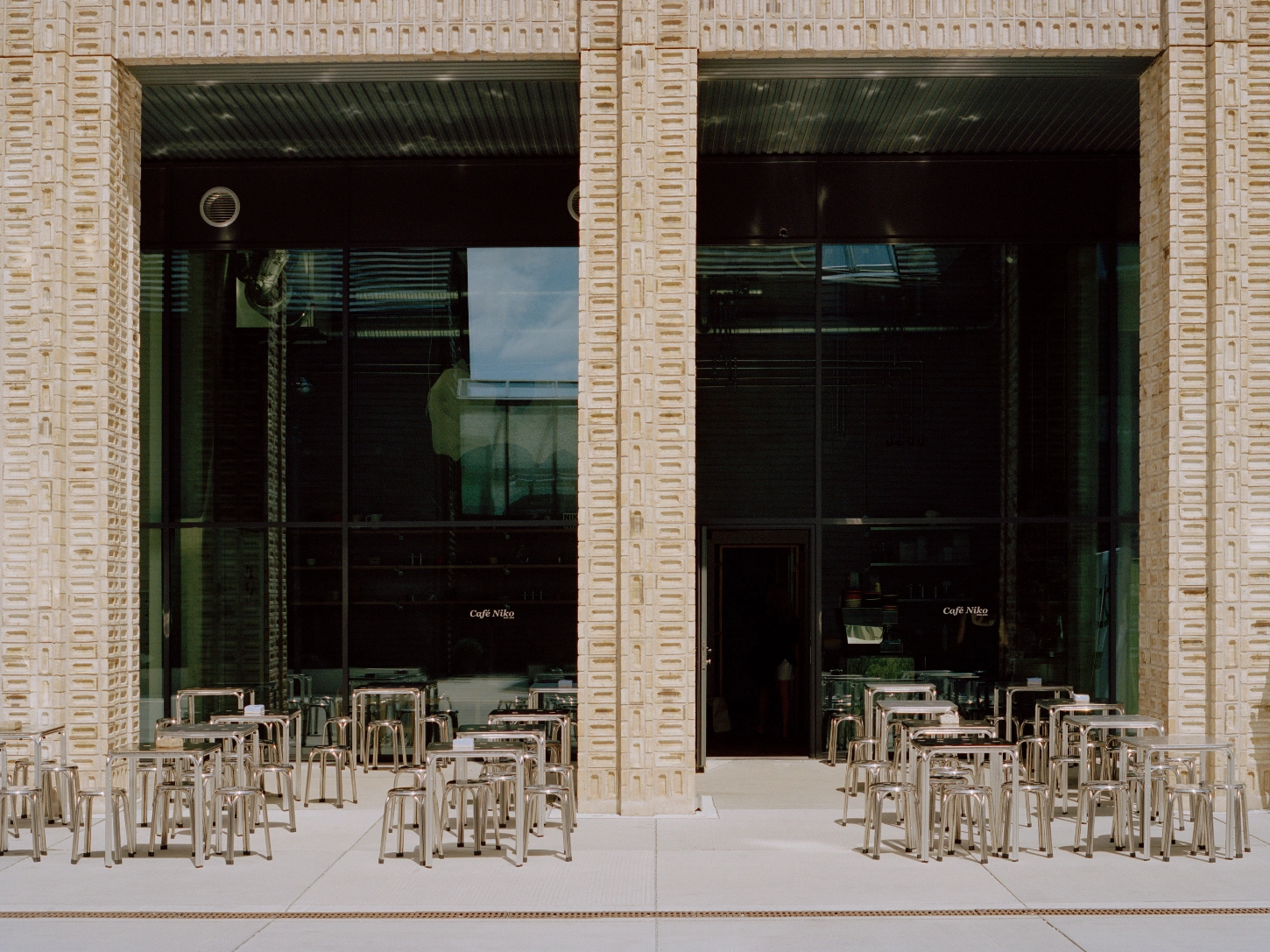On the edge of Copenhagen’s harbor, Café Niko — conceived by NIKO JUNE in collaboration with architect Kim Lenschow — stands as a quiet experiment in how design enters everyday life.
From the street, it looks more like a workshop than a café; a low room of glass and steel, where the water outside reflects softly against the concrete floor. Inside, there is an immediate sense of order without rigidity. The furniture sits with intent, not decoration. Tables are set at a generous distance, the surfaces brushed and slightly cool to the touch. Nothing here feels newly unwrapped. You sense that everything has been handled before — the mugs with their uneven glaze, the chairs that mark slightly under pressure, the counter that absorbs light rather than bouncing it back.
The objects that populate the space are not props. They are part of the daily rhythm: plates that are used, washed, and placed again; lamps that dim with the fading daylight; glass vessels whose edges carry the slight distortion of the hand that made them. The café is, in this way, an extension of the NIKO JUNE studio — a space where design isn’t presented but lived with.
As the day moves, the mood shifts. In the morning, it is quiet and deliberate, the sound of coffee poured and spoons against porcelain. By late afternoon, the room fills with a different kind of conversation — slower, heavier, occasionally interrupted by laughter that folds into the hum of the harbor outside. The transitions are gentle, unplanned. The light does most of the work.
What holds the place together is intention. There is no performance here, no attempt at hospitality as theatre. Café Niko functions on the principle that use is the highest form of beauty. It is enough for a chair to hold, for a cup to warm, for a space to slow the pace of a day.

